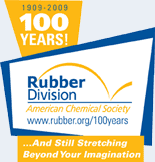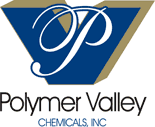![[ Visit ACS Rubber Website ]](images/logo.jpg) |
|
Centennial Elite SponsorsBecome a Centennial Elite Sponsor |
87 MECHANISTIC STUDY INTO CROSS-LINKING OF SATURATED ELASTOMERS WITH DI-AZIDESWednesday, October 14, 2009: 11:00 AM
327 (David L. Lawrence Convention Center )
For curing fully saturated elastomers, peroxide/co-agent curing systems are commonly applied. Problems encountered when using peroxides are low efficiency and unwanted side reactions. In this paper, di-azides are presented as alternatives to peroxide curing.
The performance of three di-azides, 1,3-benzenedisulfonyl azide, tri(ethylene glycol)-di(azidoformate) and 4,4’-diazidoformate from Bisphenol A were investigated. For practical product performance, a carbon black filled and oil extended compound of EPM-rubber was used. Although the mechanical properties vary significantly with the particular di-azide used, all of them act as effective curing agents compared to a peroxide/co-agent curing system. To explain the differences in properties, Model Compound Vulcanization studies were performed with 4-methylheptane as substitute for the saturated EPM-rubber backbone. Using gas chromatography/mass spectrometry (GC-MS) as analytical tool, a basic understanding was obtained about the chemistry which is taking place during the di-azide vulcanization process. |









